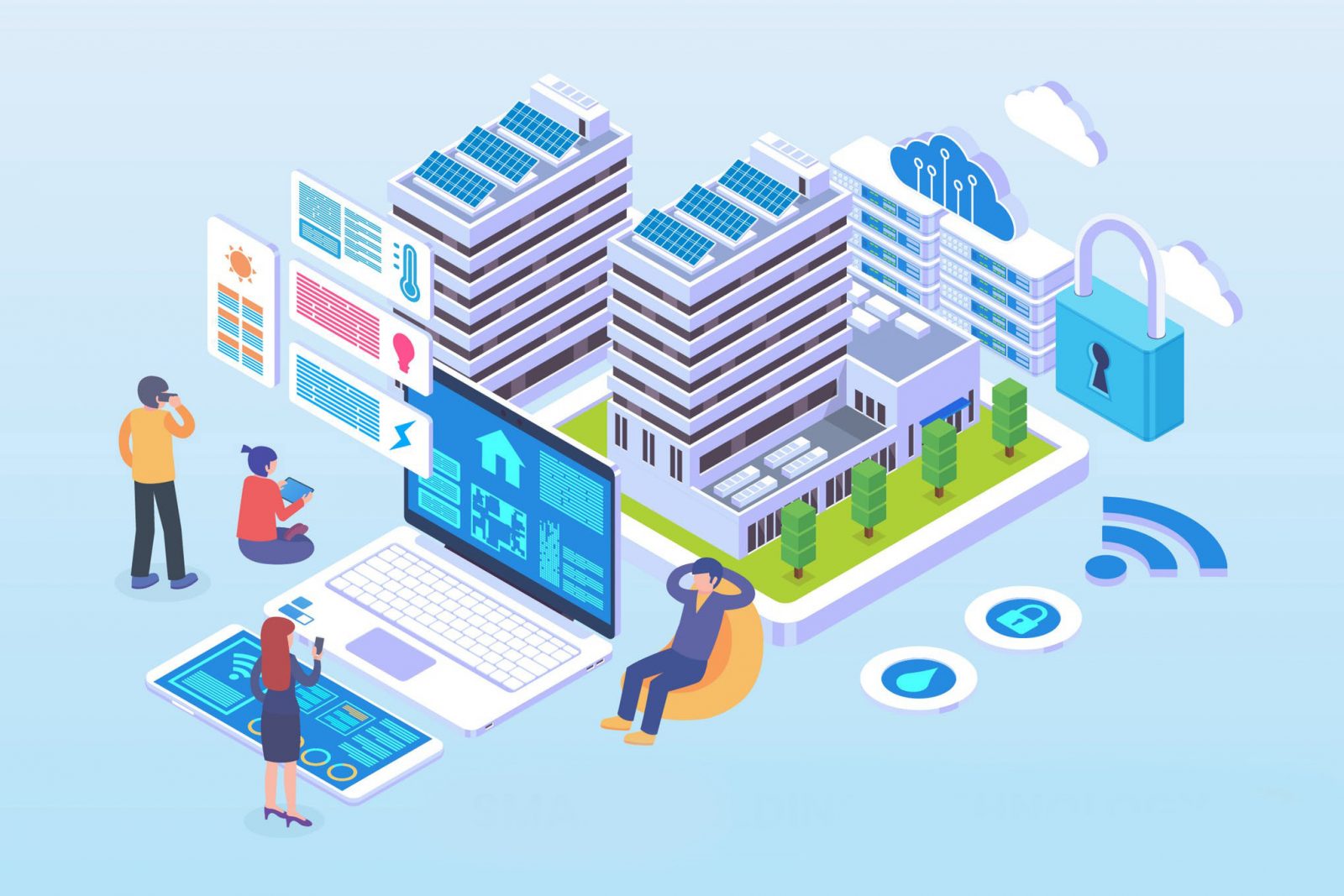
Smart buildings are the future. Devices that monitor and control building operations are becoming more common, while the cost of emergent technologies declines. Watch for new tech trends to shape commercial real estate in the coming years, making it necessary for older facilities to upgrade or become irrelevant. Here’s a look at what’s possible.
The Internet of Things
The Internet of Things (IoT) includes everything connected to the Internet, sharing and gathering data. It adds a layer of digital intelligence to the world around us. A light bulb is just a bit of glass and wires, but when it can be switched on with an app, it becomes an IoT device. Many physical objects can be linked into the IoT, some of them surprising or unexpected, like a child’s toy, or a human heart. The applications are only limited by our ability to imagine.
The Impact of IoT on Commercial Real Estate
The price of industrial sensors has significantly decreased in the last decade, making smart buildings easier to customize. From security management to air quality control, and human-centric lighting, smart buildings are connected. They’re designed to collect data that can be analyzed to improve the occupant experience for employees and tenants. IoT tech can also give startups a competitive advantage, without burdensome investments to infrastructure.
It’s possible to streamline systems, like HVAC, or car park booking, through an integrated platform. These smart building modifications improve efficiency and cut costs. For example, sensors that track room occupancy can automatically switch lights on or off and control volume of conditioned air.
Sustainability and wellness are other benefits of smart buildings. The company Pavegen creates intelligent city and retail technologies. Their flooring system interacts with shoppers and can generate off-grid electricity. The technology translates to greater efficiencies and lower operating costs. In an ideal world, that lower operating cost is a savings to the tenants of the commercial facility. When lighting, air quality control and sound masking can all be controlled via smart technology and artificial intelligence, the workplace environment becomes a better place to work, one of the factors of being considered a well-building.
The Smart Building Revolution
The CRE market is expected to continue its steady growth in 2020, as new workforce trends and tech globalization alter the landscape. We’re becoming more connected at work and at home. Commercial real estate professionals are likely to see more demand for built-in IoT technologies, which will require building owners and investors to build or renovate to the new demands and to consider the use of space in exciting new ways. The decade of the ‘20’s has the potential to be revolutionary for commercial property innovation, utilization and sustainability.
Real Estate / Workplace Trends
Please subscribe for continued insight on the workplace environment, building and retaining high-performing employees and teams, and strategies for maximizing real estate leverage.
